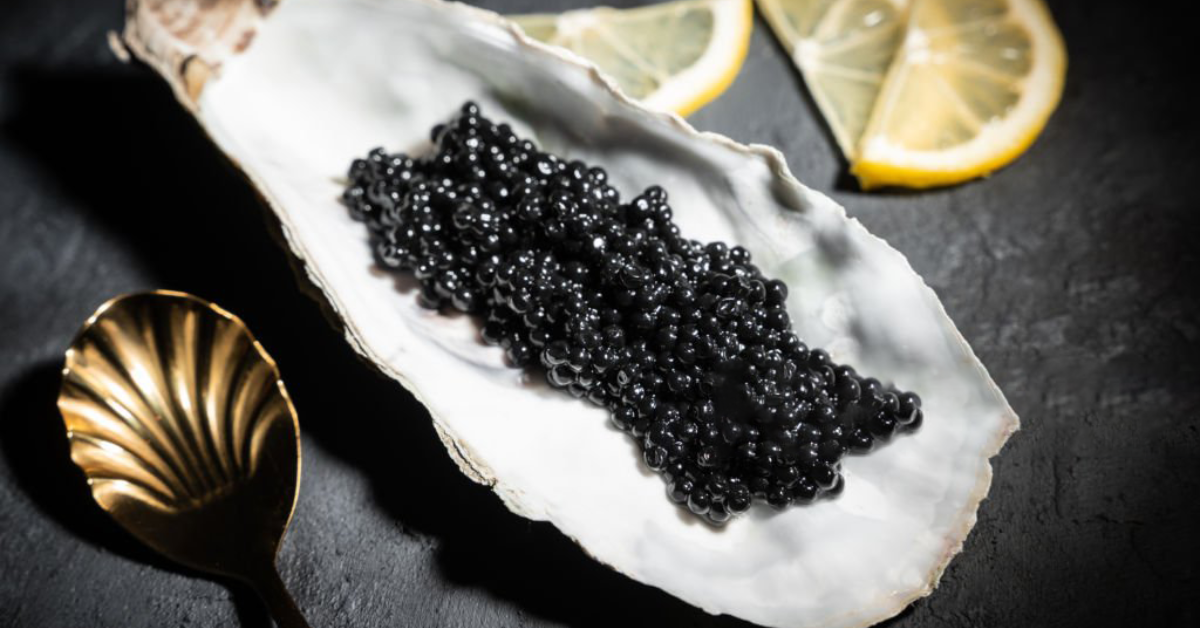
Caviar has long been associated with extravagance and class.
The delicate taste and velvety texture create an eating experience like no other. But with a hefty price tag, caviar is clearly not cheap.
What makes this gourmet delicacy so expensive?
In this blog post, we'll explore why caviar prices are so steep and whether it's worth the splurge as a high-value treat. We'll also explore a less expensive option that some people prefer more!
What is Caviar and Why is it Considered a Luxury?
Caviar consists of salt-cured fish eggs from sturgeon and other large fish. Beluga, Ossetra, Sevruga, and Hackleback are popular sturgeon varieties used for caviar. The eggs from these fish are carefully extracted and cured with salt to develop their signature texture and complex flavor.
Caviar is considered a luxury due to its scarcity, labor-intensive production, and exorbitant pricing. The delicate eggs from sturgeon and other fish provide a uniquely indulgent tasting experience reserved only for the most special of occasions.
Factors Contributing to the High Price of Caviar
The Rarity of Sturgeon Fish
Sturgeon have existed since dinosaur times, but most wild sturgeon species are now endangered due to overfishing, pollution, and habitat loss. They take 8-20 years to mature, and females don't produce eggs annually, making availability unpredictable. This limited availability of eggs contributes to caviar's extremely high prices.
The Labor-Intensive Harvesting Process
Caviar production is labor-intensive from start to finish. Sturgeons are raised for years in pristine conditions before their eggs are ready. Workers identify peak ripeness and delicately extract the eggs by hand during a brief optimal window. The caviar is then carefully cleaned, processed, graded, and packed to maximize quality and minimize loss. This meticulous handcrafting makes caviar extremely scarce and valuable.
The Strict Quality Control Standards
To preserve caviar's delicate taste and texture, producers follow strict quality control. After harvesting, the eggs are gently rinsed multiple times with cold water to remove impurities. They are then sorted by size and color before packing.
Top-tier caviars use the malossol method, containing just 3.5-5% salt to highlight the roe's subtle brininess. Proper refrigeration is also critical, as temperature fluctuations ruin quality. From harvesting to salt content to storage, many factors produce the highest quality caviar—justifying the expensive caviar prices of top brands.
The Delicate Taste and Unique Texture of Caviar
Caviar is prized for its velvety texture and one-of-a-kind taste. The smooth pearls gently pop when bitten, delivering a nuanced sweet, nutty, and briny flavor with marine undertones. Critics call caviar a multi-sensory experience, with savory umami bursts and indulgent texture contrasts. In addition, no two caviars taste identical, as subtle flavors vary by species. These complex characteristics can't be replicated, making caviar's exquisite profile a true luxury.
Smoked Trout Caviar: A Less Expensive but Equally Delicious Option

Smoked trout caviar is a more affordable, sustainable alternative to expensive sturgeon caviar like Osetra or Beluga. Despite the lower cost, it delivers a similar briny pop and can be used as a garnish or spread. The smoked trout eggs, smaller and more smoky than sturgeon varieties, offer a delicate burst of flavor. It's a great choice for those seeking to enjoy fish roe at a reasonable price, providing luxury through its distinctive popping pearls.
How to Enjoy Caviar: Tips and Pairing Suggestions
Caviar can easily be incorporated into meals for special occasions with a few tips:
- Enjoy chilled or at room temperature to appreciate the texture.
- Pair with light, non-oily crackers or toast points. Brioche, blini, and potato pancakes also complement it well.
- Add as a garnish to dishes like seafood, eggs, pasta, and risotto. A little goes a long way.
- Drink sparkling wines or vodkas to match the briny taste.
- For affordable options, try smoked trout, salmon roe, or whitefish caviar.
Caviar is meant to be savored in small doses, not consumed by the spoonful. With mindful tasting, it can provide an incredible culinary experience.
FAQs About Caviar
Is caviar healthy?
Caviar can be nutritious when eaten in moderation. The fish eggs provide protein, omega-3s, vitamins, and minerals. However, caviar is high in sodium, so enjoy it as an occasional treat. The American Heart Association recommends limiting sodium to keep blood pressure healthy. Caviar offers excellent nutrients, but be mindful of portion size.
How should caviar be stored and served?
To maintain freshness, store caviar refrigerated between 28-32° F in an airtight glass jar, away from light. When ready to eat, take it out 10 minutes before serving to take the chill off. Use a non-metallic spoon to avoid imparting a metallic taste. Avoid serving in metal containers, as this ruins the delicate flavor. With proper storage and service, you’ll be able to fully enjoy every nuance of your caviar.
What makes caviar so special?
Caviar, with its complex briny flavor and creamy texture, offers a unique culinary experience and a nutritious boost of protein and healthy fats. Its prestige stems from its scarcity and labor-intensive production, requiring skilled harvesting to yield perfect roe pearls. These factors contribute to caviar's status as one of the world's finest and most luxurious foods.
← Older post Newer post →
